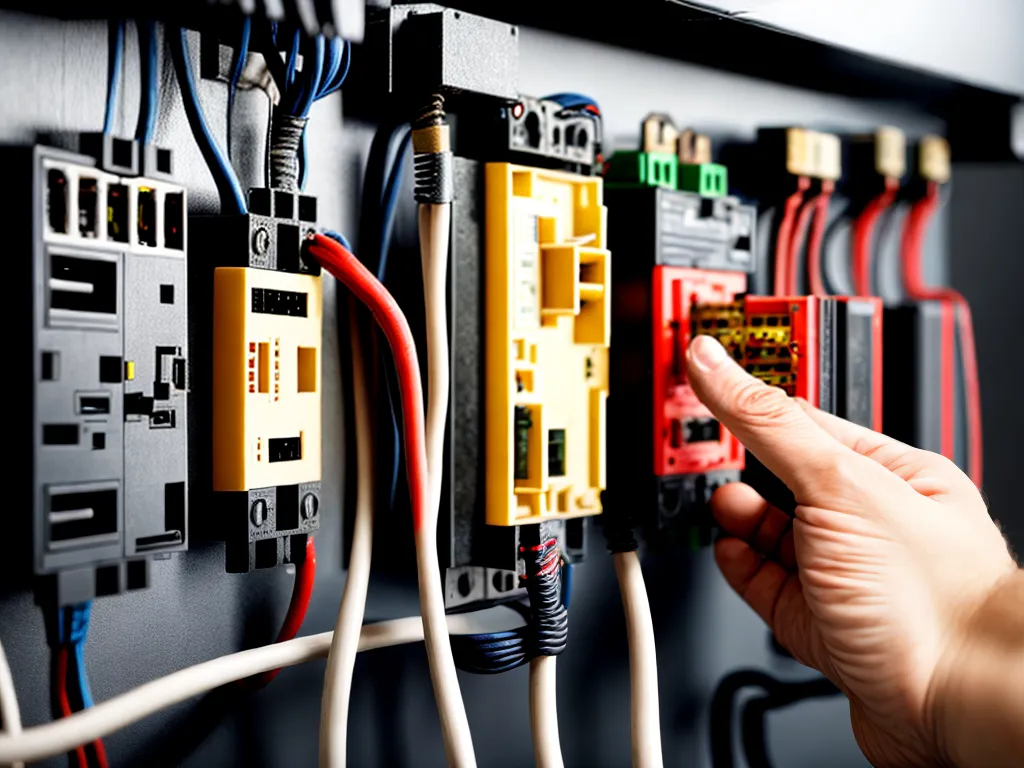
Upgrading the electrical systems in aging commercial buildings is a major undertaking, but a necessary one to improve safety, functionality, and energy efficiency. As the owner of an older office building, warehouse, or retail space, I have found that modernizing the wiring and related components pays off in the long run despite the initial investment. In this comprehensive guide, I will examine the key reasons for upgrading, the scope of the required work, costs and ROI, and tips for project success.
Why Update Commercial Building Wiring?
There are several motivations for renovating the electrical distribution systems in outdated commercial spaces:
Safety
-
Older electrical systems present major fire hazards if not properly maintained. Outdated wiring insulation can crack or fray over time, creating opportunities for dangerous shorts and arcing.
-
Upgrading to modern cabling, circuit breakers, and fixtures eliminates these risks. It also allows installing AFCIs (arc-fault circuit interrupters) to shut off electricity if a dangerous arc occurs.
-
Proper grounding and GFCI (ground-fault circuit interrupter) protections were often lacking in older buildings. Upgrades prevent shocks and electrocutions.
Functionality
-
Today's electricity demands from computers, servers, WiFi, security systems, and so on often overwhelm dated electrical systems never designed for those loads.
-
Upgrades allow redistributing electrical loads more effectively for modern usage needs. New panels, wiring, and connections provide ample capacity.
-
Outdated wiring prevents taking advantage of newer technologies like motion sensors, programmable lighting controls, electric vehicle chargers, and smart building automation. Modern electrical systems enable these advancements.
Energy Efficiency
-
Old wiring with deteriorated insulation causes energy loss and higher bills. New insulated cables minimize waste.
-
Updated electrical layouts allow installing modern, energy-efficient lighting such as LEDs. Occupancy sensors and dimmers further reduce lighting electricity consumption.
-
New wiring enables using VFDs (variable frequency drives) on motors and fans to optimize energy use. It also allows implementing smart peak load controls.
-
Energy efficient upgrades can qualify for utility rebates and tax incentives to offset costs. The improvements also raise the building's value.
Scope of Electrical Upgrade Projects
Revamping outdated electrical systems requires a full examination of a building's needs followed by comprehensive renovations. Key steps often include:
Planning and Load Calculations
-
Survey all existing wiring, panels, equipment like HVAC, and tenant power needs.
-
Do projections for future needs based on building expansion or reconfiguration plans.
-
Perform detailed load calculations to right-size the new system and components.
New Electrical Panels
-
Install properly rated new main and sub-panels with ample capacity. Choose arc-fault and GFCI breakers.
-
Organize and label all circuits clearly. Provide separate panels for lighting, plugs, HVAC, etc.
Wiring Replacements
-
Remove old outdated wiring and replace it with new cables properly sized for projected loads.
-
Use modern insulated wire to prevent energy loss and maximize safety.
-
Run new wiring through conduits for physical protection and easier maintenance.
Safety Upgrades
-
Add GFCI outlets in bathrooms, kitchens, outdoor areas.
-
Install AFCI breakers to protect branch circuits.
-
Ensure new high-quality grounded connections throughout.
Lighting and Controls
-
Update lighting fixtures with efficient LED bulbs.
-
Install occupancy sensors, timers, and dimmers to optimize lighting usage.
-
Provide programmable smart lighting controls.
Optional Enhancements
-
Add capacity for electric vehicle chargers, large specialty equipment, or future needs.
-
Incorporate smart building automation systems to centrally control electrical systems.
Costs and Return on Investment
Upgrading commercial electrical systems is a major project requiring substantial initial capital expenditure. However, the improvements make buildings much more attractive to tenants and buyers while yielding ongoing savings:
-
Total costs for a full upgrade are estimated to range from $5-$15 per square foot depending on building size and scope.
-
Potential utility incentives can offset 5-20% of job costs. Also look into utility rebates for installing efficient lighting or EV chargers.
-
Energy savings from an efficient new system average 20-40% per year, quickly adding up to major cost reductions.
-
Preventing fire damage or electrocutions provides invaluable safety benefits and legal liability protection difficult to quantify.
-
An upgraded building typically commands 10-20% higher rents and boosts occupancy rates. Improved lighting and flexible electrical capacity also facilitate leasing space.
-
Property value increases around 5-15% resulting from major electrical upgrades, providing excellent ROI at sale.
With significant benefits in multiple areas, electrical system upgrades offer excellent returns on investment overall despite the initial outlay.
Tips for a Successful Electrical Upgrade Project
To ensure a smooth wiring upgrade project with optimal outcomes, I recommend focusing on:
-
Getting quotes from multiple licensed electrical contractors experienced with commercial builds. Review qualifications closely.
-
Securing all needed permits early from the local building department. Have inspectors review plans thoroughly.
-
Completing work in phases by zone or floor to minimize downtime. Maintain power in other areas.
-
Having the contractor do as-built drawings of the new system for easy maintenance down the road.
-
Performing thorough testing of all wiring runs and connections to verify safety and functionality before inspection.
-
Checking if rebates or tax credits apply with utilities, energy efficiency programs, or governments to offset costs.
-
Exploring flexible financing options like equipment leases or power purchase agreements to reduce upfront capital needs.
-
Planning upgrades along with other renovations like lighting fixture replacements to maximize savings.
With careful planning and execution, upgrading commercial building electrical systems provides excellent payback through dramatically improved safety, functionality, cost savings, occupancy rates, and property value. Though complex, the projects are well worth the investment in the vast majority of aging buildings.